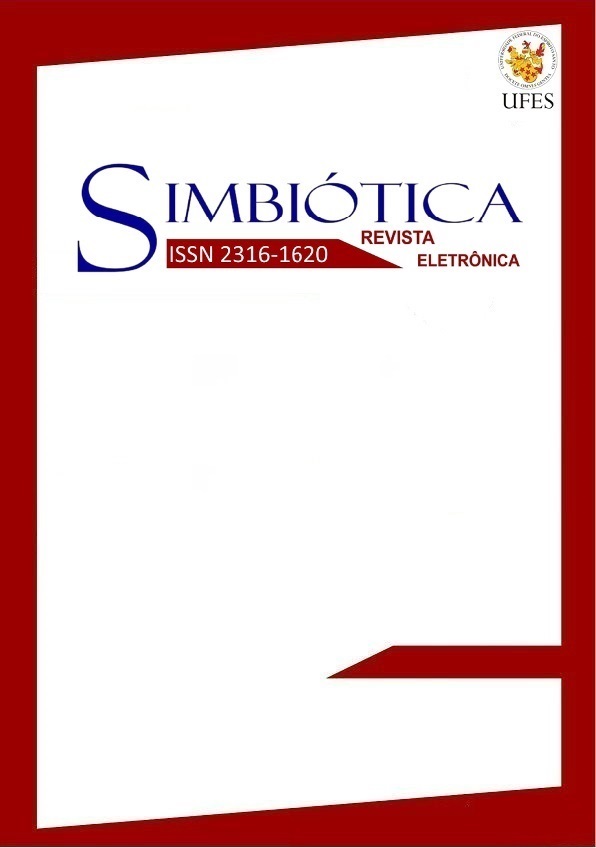Gestão de Churning de Recursos Humanos e a sua Articulação com Políticas Organizacionais
Gestión de Churning de Recursos Humanos y su Articulación con las Políticas Organizacionales
DOI:
https://doi.org/10.47456/simbitica.v10i1.38620Palabras clave:
human resources policies, churning, theoretical-methodological model, content analysisResumen
Este estudo qualitativo pautou com a participação de várias organizações, de várias dimensões e vários setores de atividade em Portugal. Através de entrevistas semiestruturadas pretendeu-se abordar os diretores de recursos humanos, de forma a obter informação pertinente para a análise da temática em estudo. Considerando a revisão da literatura, surgiu como questão de investigação: “Qual a influência das políticas de recursos humanos no churning?”, tendo-se definido como objetivo geral: analisar a influência das principais políticas de recursos humanos no churning, propondo-se como objetivo específico, a elaboração de um modelo teórico-metodológico de churning. Feita a análise de conteúdo conclui-se que as principais políticas de recursos humanos, as quais as organizações envolvidas, devem dar prioridade estão relacionadas com o salário, a progressão na carreira, o desenvolvimento de competências, os horários e a liderança, exercendo estas variáveis uma influência direta na ocorrência de churning de recursos humanos.
Descargas
Citas
ALKHAWAJA & ARWA (2017), “Leadership style and employee turnover a mythical relationship or reality?” M.A., in leadership studies. Capstone project papers.16.
BARDIN, Laurence (2011), Análise de Conteúdo. Issues 70.
BASSI, Laurie; BURE, Mark (1999), “Sharpening the leading edge”. Training and Development, 53(1), 23-32.
BURGESS, Simon; LANE, Julia & STEVENS, David (2000), “Job Flows, Worker Flows and Churning”. Journal of Economics Work, 18, 473-502 [Consult. 07-06-2022]. Available in https://doi.org/10.1086/209967
BURGESS, Simon.; LANE, Julia; STEVENS, David (2001), “Churning Dynamics: an analysis of hires and separations at the employer level”. Journal of Labour Economics, 8, 1-14 [Consult. 07-06-2022]. Available in https://doi.org/10.1016/S0927-5371(00)00027-0
DALE-OLSEN, Harald (2006), “Wages, fringe benefits and worker turnover”. Labour Economics, 13, 87-105.
DUHAUTOIS, Richard; GILLES, Fabrice; PETIT, Héloise (2016), “Decomposing the Relationships Between Wage and Churning”. International Journal of Manpower, 37, 660-683.
DEERY, Margaret (2008), “Talent management, work-life balance, and retention strategies”. International Journal of Contemporary Hospitality Management, 20(7), 792-806.
DEVANNA, Anne, FOMBRUN, Charles; TICHY, Noel (1984), “A framework for strategic human management”, in Fombrun, Charles, Tichy, Noel & Devanna, Anne. (Eds), Strategic Human Resource Management, John Wiley & Sons, New York, NY.
HUDSON, Christopher (2015), “Churning in the Human Services: Nefarious Practice or Policy of Creative Destruction?” New England Journal of Public Policy, 27(1), 1-11.
HWANG, Hae-Shin; MORTENSEN, Dale; REED, Robert (1998), “Hedonic wages and labor market search”. Journal of Labor Economics, 16, 815-847.
ILMAKUNNAS, Pekka; MALIRANTA, Mika (2005), “Worker Inflow, Outflow, and Churning”. Applied Economics, 37(10), 1115-1133.
ITO, Jack; BROTHERIDGE, Céleste (2005), “Does supporting employees career adaptability lead to commitment, turnover, or both?”. Human Resource Management, 44(1), 5-19 [Consult. 07-06-2022]. Available in https://doi.org/10.1002/hrm.20037
KAMALAVENI, M.; RAMESH, S.; VETRIVEL, T. (2019), “A Review of Literature on Employee Retention”. International Journal of Innovative Research in Management Studies (IJIRMS), 4(4),1-10.
KAYE, Beverly; EVANS, Sharon (2001), “Retaining key employees”. Public Management, 1, 6-11.
LEGGE, Karen (1995), Human Resource Management: rhetorics and realities. London: Macmillan.
LONDON, Manuel; SMITHER, James (1999), “Empowered self-development and continuous learning”. Human Resource Management, 38, 3-15 [Consult. 07-06-2022]. Available in https://doi.org/10.1002/(SICI)1099-050X(199921)38:1<3::AID-HRM2>3.0.CO;2-M
MATHIS, R. L.; JACKSON, J. H. (2003), Human resource management. 10 ed. Ohio South-Western, Thomson.
MILKOVICH, George; NEWMAN, Jerry (2004), Compensation. 8th edition, Irwin McGraw-Hill, Burr Ridge.
PIRROLAS, Olga; CORREIA, Pedro (2020), “Profissão, família e educação – conciliação da tripla jornada: uma questão de políticas e práticas organizacionais ou uma questão de sexo?” Rev. FAE, Curitiba, 23(1), 7-22.
PIRROLAS, Olga; CORREIA, Pedro (2020), “Churning Applied to Human Resource Management: the importance of a forecasting model”. Lex Humana, 12(1), 59-68.
PIRROLAS, Olga; CORREIA, Pedro (2021a), “The Theoretical-conceptual Model of Churning in Human Resources: the importance of its operationalization. Sustainability, 13(9), 1-10 [Consult. 07-06-2022]. Available in https://doi.org/10.3390/su13094770
PIRROLAS, Olga; CORREIA, Pedro (2021b), “Human Resources Churning: causes and mitigation strategies”. Lex Humana, 13(1), 165-181.
PIRROLAS, Olga; CORREIA, Pedro (2022), “About Churning”. Academia Letters, Article 5114.
PITTS, David., MARVEL, John; FERNANDEZ, Sergio (2011), “So hard to say goodbye? Turnover Intention Among US Federal Employees”. Public Administration Review, 71, 751-760 [Consult. 07-06-2022]. Available in https://doi.org/10.1111/j.1540-6210.2011.02414.x
SARADHI, Vijaya; PALSHIKAR, Girish (2010), “Employee Churn Prediction”. Expert Systems whith Applications, 38(3), 1999-2006 [Consult. 07-06-2022]. Available in https://doi.org/10.1016/j.eswa.2010.07.134
SHROTRIYA, Vikas (2009), “Balancing the see saw of work and life”. HRM Review, 42. ICFAI University Press.
SINGER, Edwin; RAMSDEN, John (1972), Human resources: obtaining results from people at work. London: McGraw-Hill.
SISODIA, Dilip; VISHWAKARMA, Somdutta; PUJAHARI, Abinash (2017), “Evaluation of Machine Learning Models for Employee Churn Prediction”. IEEE. In Inventive Computing and Informatics (ICICI), International Conference. 1016-1020 [Consult. 07-06-2022]. Available in https://doi.org/10.1109/ICICI.2017.8365293
STEIL, Andrea; PENHA, Mariana; BONILLA, Maria (2016), “Antecedentes da Retenção de Pessoas em Organizações: uma revisão de literatura”. Revista Psicologia: Organizações e Trabalho, 16(1), 88-102. Available in https://doi.org/10.17652/rpot/2016.1.542
ULRICH, Dave; HALBROOK, Richard; MEDER, Dave; STUCHLIK, Mark; THORPE, Steve (1991), “Employee and customer attachment: synergies for competitive advantage”. Human Resource Planning, 14(2), 89-102.
ULRICH, Dave (2001), Os Campeões de Recursos Humanos: inovando para obter os melhores resultados. 5. ed. São Paulo: Futura.
ZHAO, Danling; LI, Jichao; TAN, Yuejin; YANG, Kewei; GE, Bingfeng; DOU, Yajie (2018), “Optimization Adjustment of Human Resources Based on Dynamic Heterogeneous Network”. Physica A, 503, 45-57. Available in https://doi.org/10.1016/j.physa.2018.02.168 [Consult. 07-06-2022].
Descargas
Publicado
Cómo citar
Número
Sección
Licencia
Derechos de autor 2023 Olga Pirrolas, Pedro Correia

Esta obra está bajo una licencia internacional Creative Commons Atribución-NoComercial 4.0.
Autores que publicam nesta revista concordam com os seguintes termos:
a. Autores mantém os direitos autorais e concedem à revista o direito de primeira publicação, com o trabalho simultaneamente licenciado sob a Creative Commons - Atribuição-NãoComercial 4.0 Internacional.
b. Compartilhar - copiar e distribuir o material em qualquer meio ou formato.
Adaptar - remix, transformar e construir sobre o material para qualquer finalidade, inclusive comercial.
c. Autores têm autorização para assumir contratos adicionais separadamente, para distribuição não-exclusiva da versão do trabalho publicada nesta revista (ex.: publicar em repositório institucional ou como capítulo de livro), com reconhecimento de autoria e publicação inicial nesta revista.
d. Autores têm permissão e são estimulados a publicar e distribuir seu trabalho online (ex.: em repositórios institucionais ou na sua página pessoal) a qualquer ponto antes ou durante o processo editorial, já que isso pode gerar alterações produtivas, bem como aumentar o impacto e a citação do trabalho publicado (Veja O Efeito do Acesso Livre).
Authors who publish in this journal agree to the following terms:
a. Authors retain the copyright and grant the magazine the right of first publication, with work simultaneously licensed under the CCreative Commons - Atribuição-NãoComercial 4.0 Internacional.
b. Share - copy and distribute the material in any medium or format.
Adapt - remix, transform and build on the material for any purpose, including commercial.
c. Authors are authorized to take additional contracts separately, for non-exclusive distribution of the version of the work published in this journal (eg, publish in institutional repository or as a book chapter), with acknowledgment of authorship and initial publication in this journal.
d. Authors are allowed and encouraged to publish and distribute their work online (eg.: in institutional repositories or on their personal page) at any point before or during the editorial process, as this can generate productive changes as well as increase the impact and the citation of the published work (See The Effect of Free Access).














